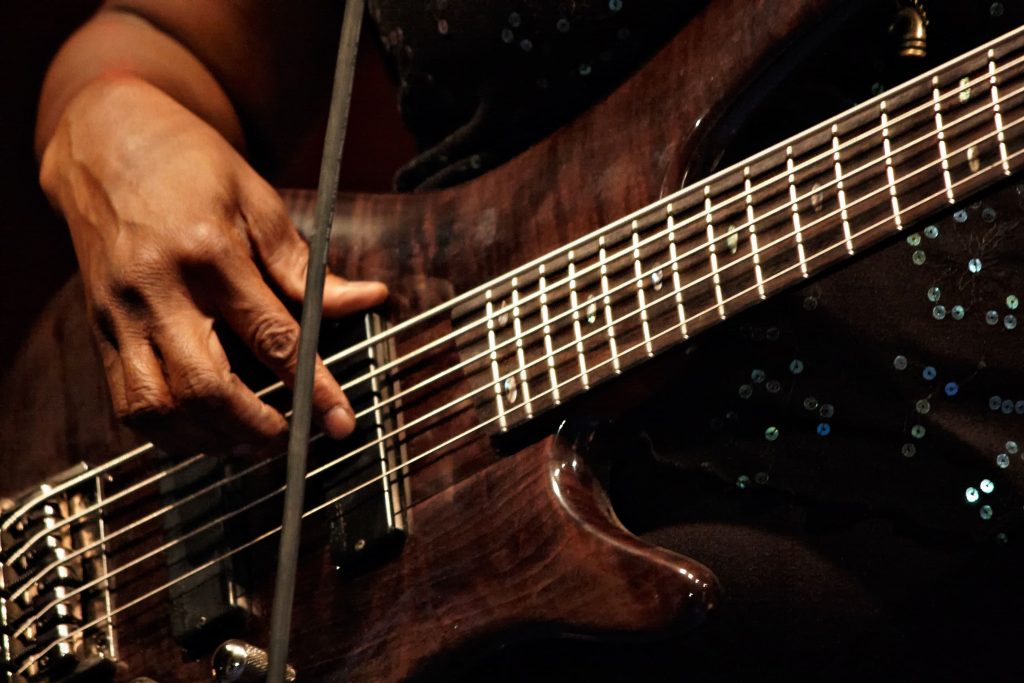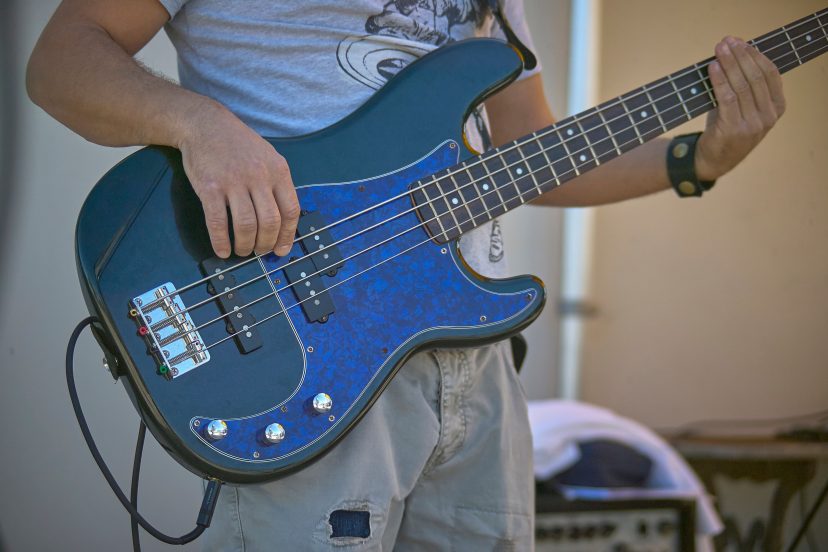Dorian Mode on Bass Guitar: Unlocking the Magic
What is the Dorian Mode on Bass Guitar?
Something that isn’t just major or minor but offers a sound that’s both soulful and bright? That’s where the Dorian mode on bass guitar comes into play. This incredible mode has been the secret weapon of countless bassists, from jazz maestros to funk legends. Let’s explore everything you need to know about the Dorian mode and how to use it on your bass guitar.
Origins of the Dorian Mode
The Dorian mode isn’t a new kid on the block. Its history goes way back to ancient Greece, where modes were the foundation of musical theory. The Dorian mode was considered a mode of strength and calm, and it’s no surprise it survived through centuries to find a home in modern music. Today, it’s a staple in jazz, rock, funk, and fusion, where its rich yet approachable character shines.
Why Bassists Should Learn the Dorian Mode
As bassists, we’re the backbone of the music. Learning the Dorian mode gives you more tools to add depth and emotion to your lines. Unlike the straightforward major or minor scales, the Dorian mode balances minor melancholy with a bright twist thanks to its raised sixth note. This makes it perfect for crafting groovy bass lines, creating soulful solos, or adding color to chord progressions. It’s like having a secret ingredient that enhances everything you play.
Basics of the Dorian Mode on Bass Guitar
Intervals of the Dorian Scale
The Dorian mode follows this pattern of intervals:
Whole – Half – Whole – Whole – Whole – Half – Whole
Let’s break it down with an example in the key of D:
- C (minor seventh)
- D (root)
- E (major second)
- F (minor third)
- G (perfect fourth)
- A (perfect fifth)
- B (major sixth)
Notice how it resembles the natural minor scale, except for that raised sixth note (B in this case). This small change creates a big impact, giving the Dorian mode its distinct sound.
Comparing Dorian to Other Modes
Compared to Aeolian (natural minor), the Dorian mode feels brighter because of the raised sixth note. It’s also less tense than Phrygian and more versatile than Locrian. The Dorian mode often works as a happy medium for bassists looking to add a touch of sophistication without overwhelming the listener.
The Unique Sound of Dorian
The sound of the Dorian mode is unforgettable. It’s like walking a tightrope between minor and major. It’s soulful, jazzy, and smooth but can turn funky or rock-heavy with just a slight adjustment. It’s why musicians like Miles Davis and Herbie Hancock have used it to craft timeless pieces.
How to Play the Dorian Mode on Bass Guitar
Understanding the Root Note
Everything starts with the root note. To play the Dorian mode, pick a root note—say, D—and follow the interval pattern we discussed. This root note serves as your anchor, giving you a point of reference as you move up and down the fretboard.
Finger Placement and Positioning
Proper finger placement is essential for smooth playing. Begin with your index finger on the root note, and use a one-finger-per-fret technique to maintain efficiency. Move across the strings instead of along them to explore multiple octaves without repositioning too much.
Popular Patterns for the Dorian Scale
Here are two patterns to get you started:
- Box Pattern: Focuses on a small section of the fretboard, great for beginners.
- Two-Octave Pattern: Covers a broader range, ideal for connecting notes across strings and building fluidity.
Practice these patterns in different keys to gain mastery over the fretboard.
Musical Applications of the Dorian Mode on Bass Guitar
Playing Dorian in Bass Lines
Bass lines are where the Dorian mode truly shines. For example, in a funk groove, you can emphasize the root, minor third, and raised sixth to create a rhythmic, melodic line. The Dorian mode also fits perfectly over minor seventh chords, making it a go-to for smooth walking bass lines in jazz.
Using Dorian for Solos
Want to take the spotlight? Use the Dorian mode for solos. Its raised sixth note creates melodic opportunities that aren’t available in a natural minor scale. Try sliding between the minor third and raised sixth for a soulful, expressive sound.
Famous Songs That Use the Dorian Mode
Listening to songs in the Dorian mode is a great way to internalize its sound. Check out “So What” by Miles Davis for a jazz perspective or “Eleanor Rigby” by The Beatles for a rock twist. These songs showcase the versatility of Dorian and inspire new ideas for your bass playing.

Practice Tips for Mastering the Dorian Mode
Exercises to Build Muscle Memory
Start with simple scale exercises:
- Ascend and descend the Dorian mode in different keys.
- Play it in thirds (e.g., D-F, E-G, F-A) to break free from linear patterns.
- Create small riffs using the scale to familiarize yourself with its sound.
Jam Tracks for Practicing Dorian
Practicing with a backing track can be a game-changer. Look for minor seventh chord loops to play the Dorian mode over. This helps you understand how the mode fits within a musical context, making your practice sessions more enjoyable and productive.
Incorporating Dorian into Everyday Practice
Dedicate a small portion of your practice time to exploring the Dorian mode. Start by warming up with scale runs, then transition to improvisation. Over time, you’ll naturally start incorporating it into your playing.
Common Mistakes and How to Avoid Them
Overusing Dorian
It’s easy to fall in love with the Dorian mode, but overusing it can make your playing predictable. Mix it up by switching to other modes, such as Mixolydian or Phrygian, to keep things fresh.
Ignoring Context in Songs
Not every song is a good fit for the Dorian mode. Pay attention to the chords and overall mood. If the song calls for a natural minor or major feel, don’t force Dorian into the mix.
Advanced Dorian Concepts for Bass Guitarists
Combining Dorian with Other Modes
For a more advanced approach, blend Dorian with other modes. For instance, transition from Dorian to Mixolydian when the chord changes from minor seventh to dominant seventh. This adds complexity and keeps your lines engaging.
Crafting Unique Bass Solos with Dorian Mode on Bass Guitar
Take your Dorian solos to the next level by adding chromatic passing tones or experimenting with rhythm. Don’t be afraid to break the rules—music is all about expression.
Conclusion
The Dorian mode is a fantastic tool for any bassist looking to expand their creative horizons. It’s versatile, musical, and downright fun to play. Whether you’re grooving in a funk jam, walking through a jazz standard, or experimenting with solos, the Dorian mode will add depth and sophistication to your playing. So grab your bass, dive in, and let the Dorian magic unfold!
FAQs
1. What makes the Dorian mode unique?
The raised sixth degree is what sets it apart, adding a brighter, more dynamic quality compared to the natural minor scale.
2. Which genres use the Dorian mode the most?
You’ll find the Dorian mode in jazz, funk, fusion, rock, and even modern pop music. Its versatility makes it a favorite across genres.
3. How do I practice the Dorian mode effectively?
Start with scale runs, experiment with riffs, and use backing tracks to practice applying the mode in real musical contexts.
4. Can beginners learn the Dorian mode?
Absolutely! The Dorian mode is beginner-friendly and offers an excellent introduction to modal playing. Start slow and build confidence.
5. What are some famous songs that use the Dorian mode?
“So What” by Miles Davis and “Eleanor Rigby” by The Beatles are great examples. These tracks showcase the Dorian mode’s versatility and charm.




